Customer service software
Your customers are the most important part of your business. Customer service software enables you to build better customer relationships.
Last updated November 21, 2023
Complete guide to the best customer support software
Customer support software is the backbone of a great customer experience. But knowing which tools are right for your business, vetting providers, and getting the system implemented is no easy task.
To help you with that, we’ll start with the basics of customer support software: what it is, the different types, and how it benefits your team. Then we’ll get into best practices, the latest trends, and an overview of the best available tools. To wrap up, we’ll walk through how to think about choosing the ideal customer support software for your organization.
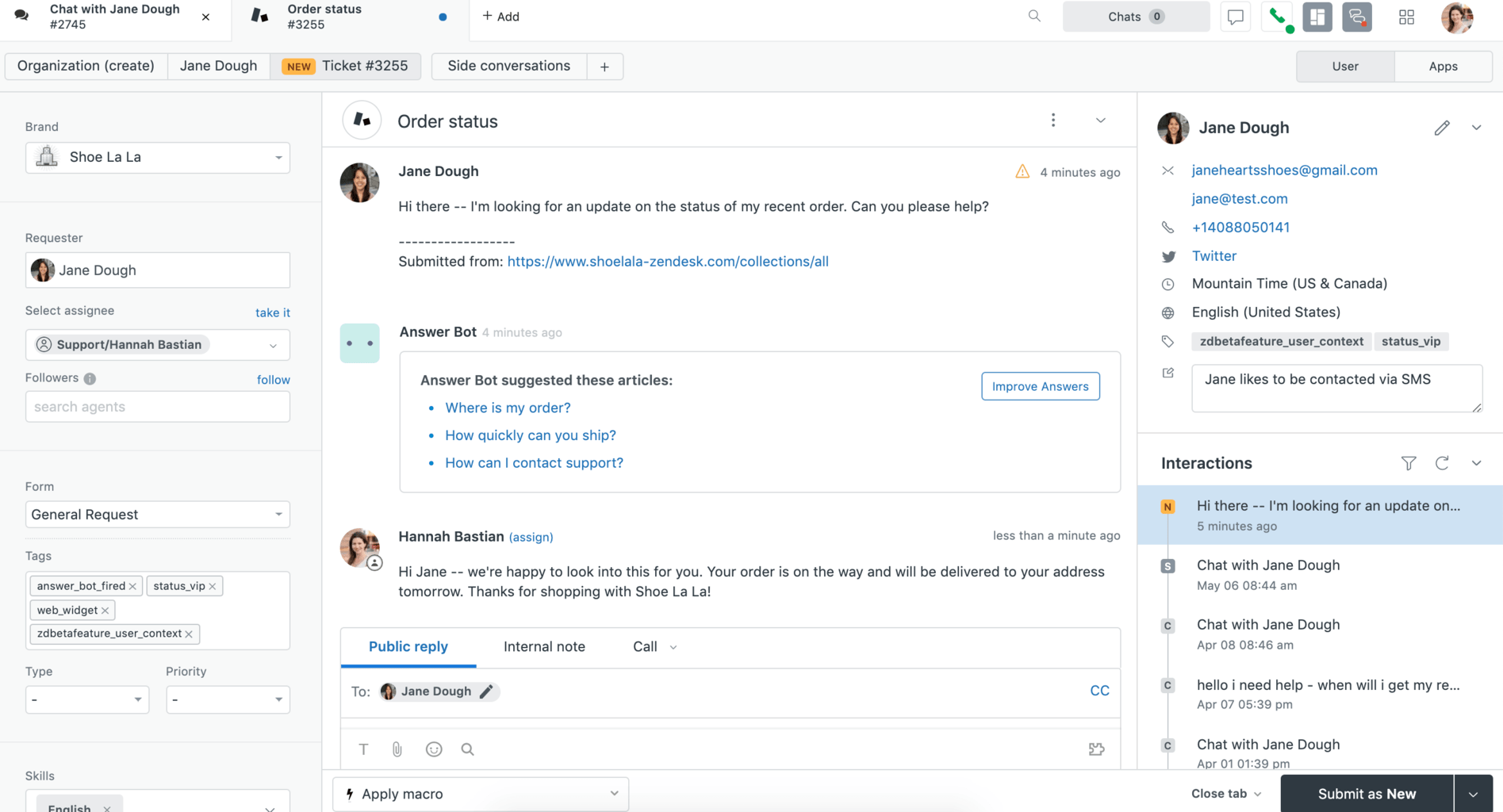
Feel free to skip around by clicking through the table of contents below:
- Definition of customer service software
- Main benefits
- 5 key types of software
- Best practices for customer service software & apps
- Customer service software trends
- 15 customer service software tools
- A summary of the top customer service software solutions
- Choosing software for your business
- Try customer service software for free
What is customer service software?
Customer service software is any program that helps an organization provide assistance and/or advice to the people who buy or use their products.
The most basic role of customer service software is to provide a centralized system, known as a ticketing system, where service agents can track, prioritize, manage, respond to, and resolve customer queries or employee requests en masse. Customer service software also includes any tool that helps inform or facilitate customer service delivery.
This includes tools such as knowledge bases, messaging apps, automation software, analytics dashboards, and more.
Customer service software is often integrated with CRM software to give agents access to contextual data, such as a customer’s purchase history, from external sources. This equips a support team with context about who a customer is, where they’re coming from, and why they’re reaching out—regardless of channel.
How does customer service software work?
At its most basic level, customer service software enables businesses to improve customer service delivery by unifying customer conversations and information across channels and systems in a single location.
Why do small businesses need customer service apps?
Small businesses need customer service applications to help organize, prioritize, and consolidate customer service inquiries. When used well, customer service apps enable quicker, more reliable, and more personalized responses to customer inquiries. This helps small businesses set themselves apart with superior customer service.
Benefits of customer service software
Customer service platforms can benefit companies of all sizes and types—from multinational enterprises supporting millions of other businesses in multiple languages, to small consumer-facing businesses that need to answer customer questions quickly without hiring an army of support reps.
Here are some key benefits of customer service software:
-
Drives customer satisfaction and loyalty
When service agents have the information and tools they need to provide fast, personalized responses to customers, they can deliver better service. With better service, your customers are less likely to churn and more likely to become loyal buyers.
And since 52 percent of customers go out of their way to buy from brands they’re loyal to, more loyalty usually means more sales. In this way, by facilitating improved service, customer service software can help your business grow with more satisfied, loyal customers.
- Streamlines self-service
63 percent of customers always or almost always start with a search of a company's online resources when they have an issue. For enterprises, the challenge is managing a system for creating and updating those resources in real-time.
Customer service platforms enable your business to streamline knowledge base creation and management, saving agents time and providing customers with the resources they need. Plus, you can track how your customers are using your knowledge base to help inform further self-service improvements.
- Fosters a seamless agent experience
Customer service tools help agents access and use the customer information they need, when and where they need it. These tools also facilitate improved internal collaboration with shared inboxes and greater efficiency with streamlined workflows. The result is agents that are more prepared and motivated to provide better customer care. All that leads to greater productivity, saving the business time and resources.
- Gives businesses the ability to scale smarter
At a certain point, rudimentary tools like spreadsheets aren’t enough to facilitate transparent internal and external customer service communications. But without effective collaboration among your service team, maintaining high levels of customer satisfaction as your business grows is nearly impossible.
Customer service applications give a business the power of customer-centric agility. In other words, they enable a company to grow and scale based on the needs of its customers.
- Enables smaller teams to do more, faster
The speed of 'first reply' is one of the biggest influencers on customer satisfaction. But with so many service channels and the growing demand for personalization, service agents need customer service apps to help them respond to and resolve issues faster.
And the data backs this up: in the Zendesk Benchmark Guide for Enterprise, the top-performing service teams have almost double the ticket-to-agent ratio of other companies. The way they perform well with fewer agents is by using customer service software that enables each agent to do more.
Types of customer service software
Customer service can be internal—supporting the employees within a company—or external—supporting the people who buy or use its products or services.
Each customer service channel is often considered a different type of customer service. Here are the main types of customer service you should know about:
Live chat
Live chat software enables agents to solve customer issues in real-time, from where they already are, such as the homepage of your website or inside your mobile app.
This gives a business the ability to be proactive and get ahead of an issue before it happens or even occurs. For instance, an e-commerce company might offer live chat on its checkout page to answer frequently asked questions before a customer abandons their cart.
Live chat also enables a business to offer support around the clock. While your agents are busy being humans, chatbots can handle customer requests for them.
Phone support
A phone conversation remains an effective way to solve a customer’s problem, especially for high-stakes issues. It’s sometimes even more effective than drawn out email conversations or real-time chatting, thanks to the personal touches that come with a phone call like a human’s voice.
With features like call recordings, smart internal routing, access to the full customer history, and automatic ticket creation, call center software enables customer service representatives to be more strategic.
Email is the bread and butter of customer support. Similar to the phone, it’s long-ingrained, and remains a preferred channel among older generations.
Email often serves as an internal form of support as well as an external one. A Human Resources, Payroll, or IT team, for example, could use email to answer questions for full-and part-time employees.
Knowledge base
With a knowledge base, community forum, or customer portal, support teams can empower customers to self-serve. In fact, 81% of customers would rather figure out an issue on their own.
But this is only possible if support teams have tools to make knowledge creation and upkeep easy. For instance, AI can flag when content is out-of-date or when a new article topic is needed. It can also use agents’ collective knowledge to automate resolutions for low-touch tickets.
Messaging apps
The proliferation of messaging channels—like WhatsApp, Apple Business Chat, and Facebook Messenger—has changed the way that people get in touch.
That convenience factor has made its way to customer service as well. Customer service software apps allow customers to get in touch over the same messaging channels they use to communicate with friends and family.
The benefit of using customer service software to communicate over messaging channels is the ability to keep conversations and context in a centralized location. If resolving a customer’s issue starts with a message then necessitates a follow-up phone call, all of that information is logged within the same support ticket.
Best practices for customer service apps & software
Customer service software promises exciting capabilities, but those promises break if the people using that software don’t follow best practices. Here are four best practices that’ll help your team exceed expectations:
Meet customers on their own terms
Customers don’t care about terms like omnichannel. But companies should.
The experience that omnichannel customer service can provide is a massive differentiator and a key tool for cultivating loyalty. What omnichannel means is offering all the channels that customers expect for communicating with your company — email, chat, phone, text, and social media.
This creates trust and comfort for the customer because they can communicate with you in the same way they already talk to friends and family.
Make personalization possible
The information you need to figure out what your customers want from your products and services is probably available to you, and possibly already pouring in. This data can feed engagement strategies with insights on when, where, and how to engage customers.
And it works: Zendesk findings show companies that leverage the most data see 36 percent faster resolutions and a 79 percent reduction in wait time while solving four times the customer requests.
If you don’t know where to start, a good first step is to use an open and modern CRM platform so you can link data sources to create and offer personalized service based on real customer preferences.
Invest in effective collaboration
There’s a reason that in this list of companies with the worst customer service ratings, giant telecoms, banks, and airlines dominate the top ranks. Giant companies are complex, and it’s a lot harder to find the right person to talk to when there are thousands of employees—for both agents and customers.
This is what makes it so important to give your teams easy ways to reach out to other departments, so you can streamline communication and internal workflows, giving agents the context they need, when they need it to provide more responsive support.
Current trends for customer service platforms
When you’re thinking about an investment in a customer service platform, whatever tool you choose will evolve and change. Don’t worry, that’s a good thing. You want tools that can evolve as your business, and the world, change. But that also means you need to keep an eye on how the world of customer service management is changing.
Here are a few of the top customer service trends you’ll want to keep in mind as you use or consider using, new software.
Data-driven personalization as the price of entry
The idea of tapping into data from across the organization to facilitate personalized, contextually relevant customer service is not particularly new. What is new is the greater accessibility of tools that enable data-driven personalization and a broader realization among executives of the value of customer data.
In fact, the most recent KPMG CIO Survey showed that when it comes to attracting customers, 91 percent of CIOs know that how they handle and use customer data is becoming equally important as a company’s products and services offerings.
In the past, a truly data-driven customer experience was too resource-intensive for most companies. But with more powerful, affordable software, tapping into data to serve your customers better isn’t so much a differentiator. It’s more like the price of entry.
Customer service teams are focusing on efficiency
Well before COVID-19, hiring managers had stiff competition for quality agents. So much so that most teams were expecting more growth in customer requests than in headcount. The pandemic poured lighter fluid on that fire, creating even more resource constraints. The result has been a greater focus on using the right culture, solutions, and data visibility to improve efficiency.
Still, only around half of customer service agents say they have adequate tools for measuring and reporting on the metrics that are most important to their support team. And almost 40% are neutral.
This gap presents an opportunity for CIOs and other IT leaders to again prioritize customer experience—the sum of every touchpoint each customer encounters with the business—before approving another redundant or risky point product.
Blending customer service and customer success
Traditional customer service is reactive. Customers have a problem, they reach out to an organization, and they’re routed to an agent or resource that can help them solve their issue. But the world’s fastest-growing companies are delivering customer service more proactively.
Rather than reacting, these organizations tailor their service to ensure their customers reach their goals.
Some enterprises are even building dedicated customer success teams as a complement(or replacement) for their service teams. While traditional customer service is far from obsolete, it’s clear that executives, managers, and agents are rethinking how they define customer service.
15 best customer service software tools to enhance the customer experience
-
Zendesk
-
Sprout Social
-
Hootsuite
-
MailChimp
-
Apple Business Chat
-
Facebook
-
SurveyMonkey
-
Slack
-
Recurly
-
NICE inContact CXone
-
EZOfficeInventory
-
Boss Solutions Suite
-
Jira Service Desk
-
LiveAgent
-
Freshdesk
Customers expect to communicate with companies using the channels they prefer, which now represent a host of technologies to staff efficiently and connect to your tech stack. Here are some customer service tools that help a business provide great customer service.
1. Zendesk
Zendesk’s customer service software empowers businesses to build effortless customer experiences. Conversations flow seamlessly across channels, leading to greater productivity and satisfaction all around.
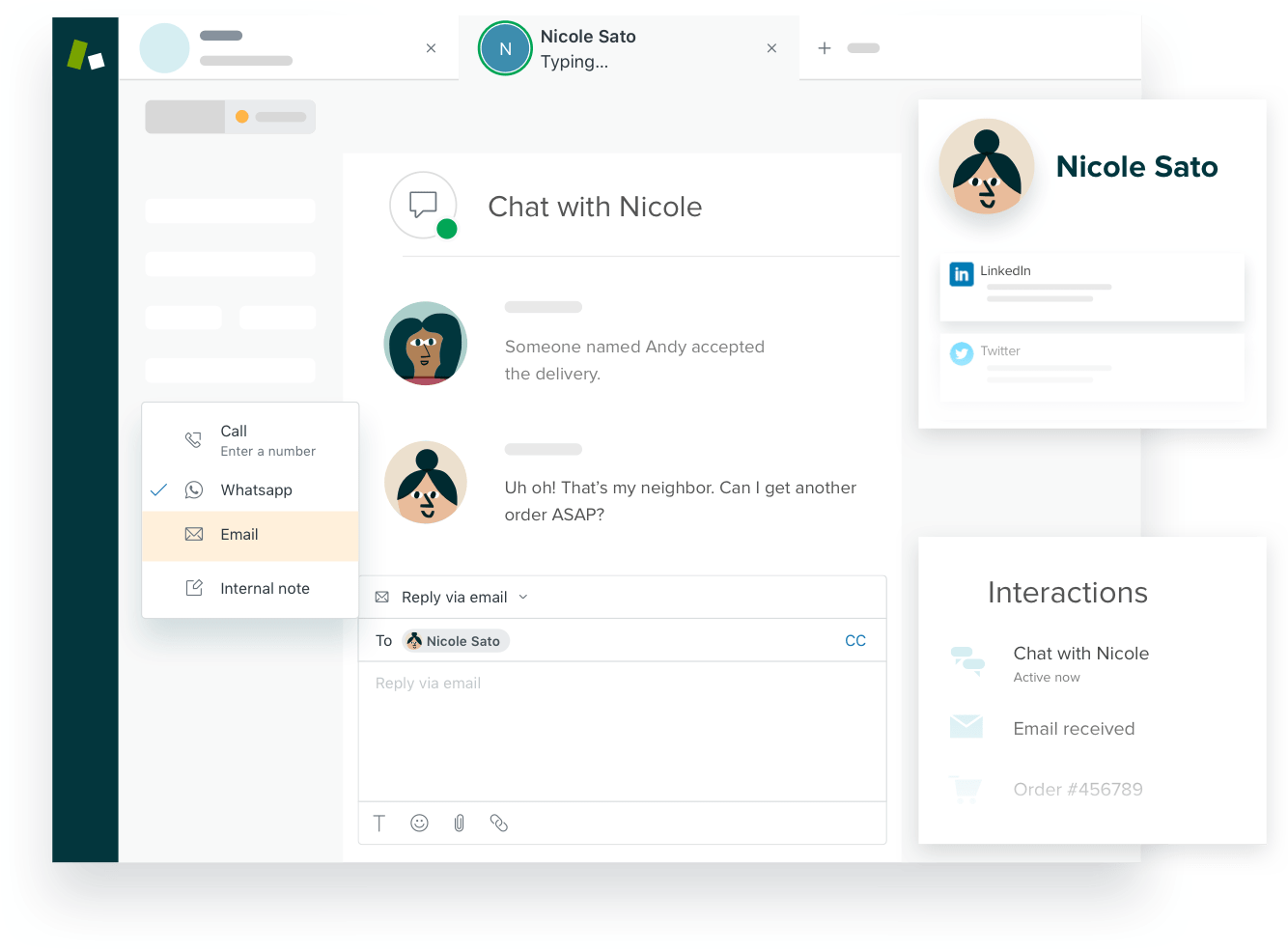
Zendesk Agent Workspace customer service software tool
The Agent Workspace within Zendesk’s Suite equips agents with all the tools they need to collaborate with each other, other teams, and deliver fast, personalized responses on any channel—from a single, unified interface.
Zendesk’s customer service software is quick to implement, easy to use, and scales to fit the needs of businesses of any size:
Zendesk for enterprise companies
Enterprise companies need the right balance of simplicity and sophistication to align large teams and technology around what matters most—their customer. Zendesk equips an enterprise organization with the tools it needs to meet the needs of a diverse customer base on the channels of their choice while ensuring the experience is a personal one.
A large, dispersed company also means managing multiple agents and their many unique skill sets. Zendesk provides flexibility to customize your support solution with tools like advanced workflow capabilities and AI-powered automation and self-service—which means tickets get to the right agents, and agents have the knowledge they need to solve any problem.
The Zendesk ticketing system also seamlessly integrates with other tools, data, and communications across all departments to ensure smooth customer interactions and fewer miscommunications within complex operations.
Learn more about Zendesk’s enterprise customer service software.
Zendesk for SMBs
Zendesk gives small and mighty teams the gift of efficiency. It’s powerful yet easy-to-use and designed to help your customer service team work better together, making the most of their time and energy. Plus, it’s easy to customize with the tools you already use so you can build on what you have.
By working within Zendesk’s centralized workspace, you’ll have all the tools you need to keep track of customers' questions and share the information they need, right when they need it. And, by using Zendesk’s AI-powered automations and dynamic workspaces, your team can work smarter, faster, and reach more customers.
Learn more about Zendesk’s SMBs customer service software.
Zendesk for Startups
When you provide your customers with the experience they expect, you win their trust and loyalty in return. Zendesk’s omnichannel support solution empowers startups to be wherever their customers are. Integrate support channels like email, chat, and phone into one place, and save time by offering self-service options.
The best part? Zendesk for Startups provides a free 6-month credit—including access to tailored resources and a growing network and community of customer experience leaders.
Learn more about Zendesk’s startup customer service software.
Features of Zendesk's customer service software
- Ticket routing
- Live chat software
- Native integrations
- Knowledge base
- API
- Tracking and reporting
- Self-service portal
- Community forums
- Automation
2. Sprout Social
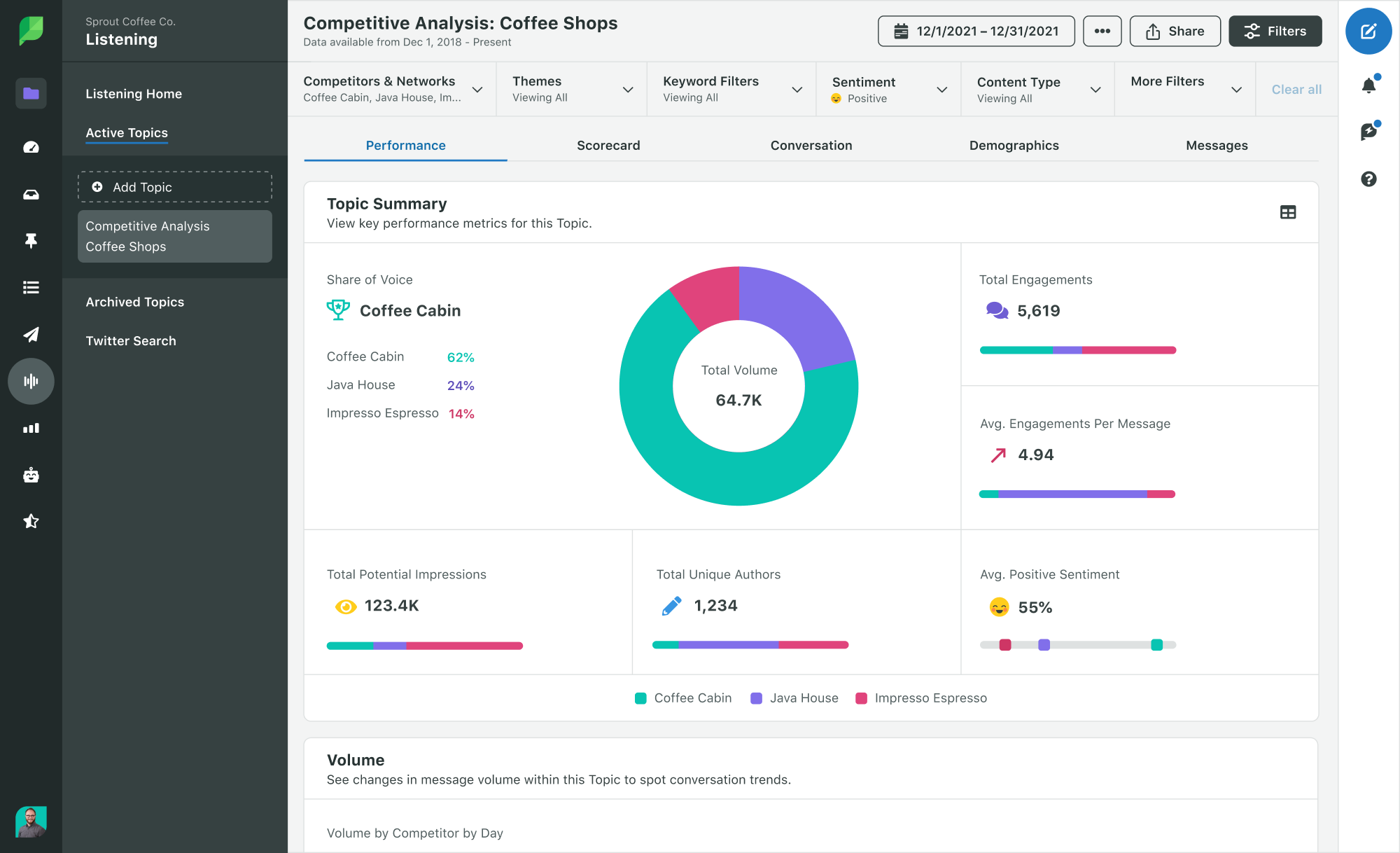
With the ever-growing adoption of social media for communication, customer service software that helps support teams deliver cohesive social support experiences is immensely valuable. Through its combination of sales, support, marketing, social media monitoring, and engagement features, Sprout Social helps facilitate conversations across all social media channels.
And by connecting social media teams and support agents, Sprout Social eliminates disconnected or siloed communication and workflows.
Features
- Reporting and analytics
- Automation
- Tracking and reporting
- Customer segmentation
- Social media monitoring/management
- Post scheduling
Learn more about Sprout Social's Zendesk integration.
3. Hootsuite

Hootsuite helps teams engage with customers and schedule content across multiple social networks from one secure web-based dashboard. Its wide range of features and a large library of integrations make Hootsuite a solid overall tool for service operations.
Combined with Zendesk through a native integration, you can use Hootsuite to create, update, review, and edit tickets from social media. With Hootsuite and Zendesk, you remove the silos that often pop up between social and support teams. The result is better, more seamless customer interactions across all channels.
Features
- Automation
- Tracking and reporting
- Customer segmentation
- Social media monitoring/management
- Post scheduling
Learn more about the Zendesk app for Hootsuite.
4. MailChimp

MailChimp enables businesses to create, send, and track email newsletters, signup forms, and event invitations. Teams can personalize emails with targeted customer segments when integrating a customer support system like Zendesk Support.
But even more than that, for a smaller business, MailChimp can double as an all-in-one marketing platform. Though you’ll need one of their more expensive plans, you can use MailChimp to create landing pages and ad campaigns, track performance, and automate emails.
Features
- Tracking and reporting
- Contact management
- Landing page and email design tools
- Automation
- Social media monitoring
- Live chat
Learn more about connecting Zendesk Support and Mailchimp.
5. Apple Business Chat

With Apple Business Chat, customers can get answers to their questions, schedule appointments, resolve issues, and make purchases—without leaving the messenger.
To ensure a consistent and seamless conversational experience over custom messaging channels like Apple Business Chat, a business will need a messaging partner, such as Sunshine Conversations.
Features
- Native integrations
- Booking
- Payments
- Image/audio/video file support
- API
Learn more about integrating Apple Business Chat into Zendesk Support.
6. Facebook
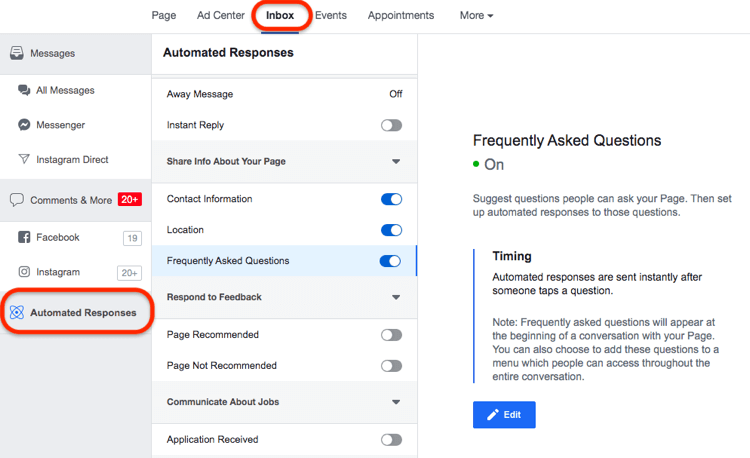
Facebook Messenger and WhatsApp enable customers to get fast, convenient messaging support on phones messaging support on phones all over the world. With a CRM platform like Sunshine Conversations, customers can do everything from change a hotel reservation, pay a bill, or find the perfect lipstick color—inside the messaging thread.
Features
- Native integrations
- Booking
- Payments
- Image/audio/video file support
- API
Learn more about using popular messaging channels like WhatsApp and Facebook Messenger with Zendesk.
7. SurveyMonkey

SurveyMonkey is a customer service tool that provides businesses with templates for a plethora of customer surveys to glean insight into things like product feedback and CSAT. And with SurveyMonkey’s extensive library of integrations, you can easily work this tool into your existing workflow.
In other words, SurveyMonkey enables you to gather feedback from customers or employees with minimal disruption to you and them.
Features
- Live results tracking
- Polling
- Tracking and reporting
- Image/audio/video file support
- Email distribution
- Native integrations
- API
Learn more about the SurveyMonkey app integration with Zendesk.
8. Slack

Slack allows internal customers to seamlessly get support from IT or HR departments, from the same channel they use to communicate with their teammates. When combined with an AI-powered bot, like Zendesk’s Answer Bot, employees can self-serve over Slack at scale.
When integrated with a customer service software solution, Slack also enables agents to better communicate with each other when solving tickets for more streamlined collaboration and faster.
Features
- Live chat
- Video conferencing
- Messaging
- Native integrations
- API
- Community forums
- Surveys
Learn more about Slack for Zendesk Support.
9. Recurly
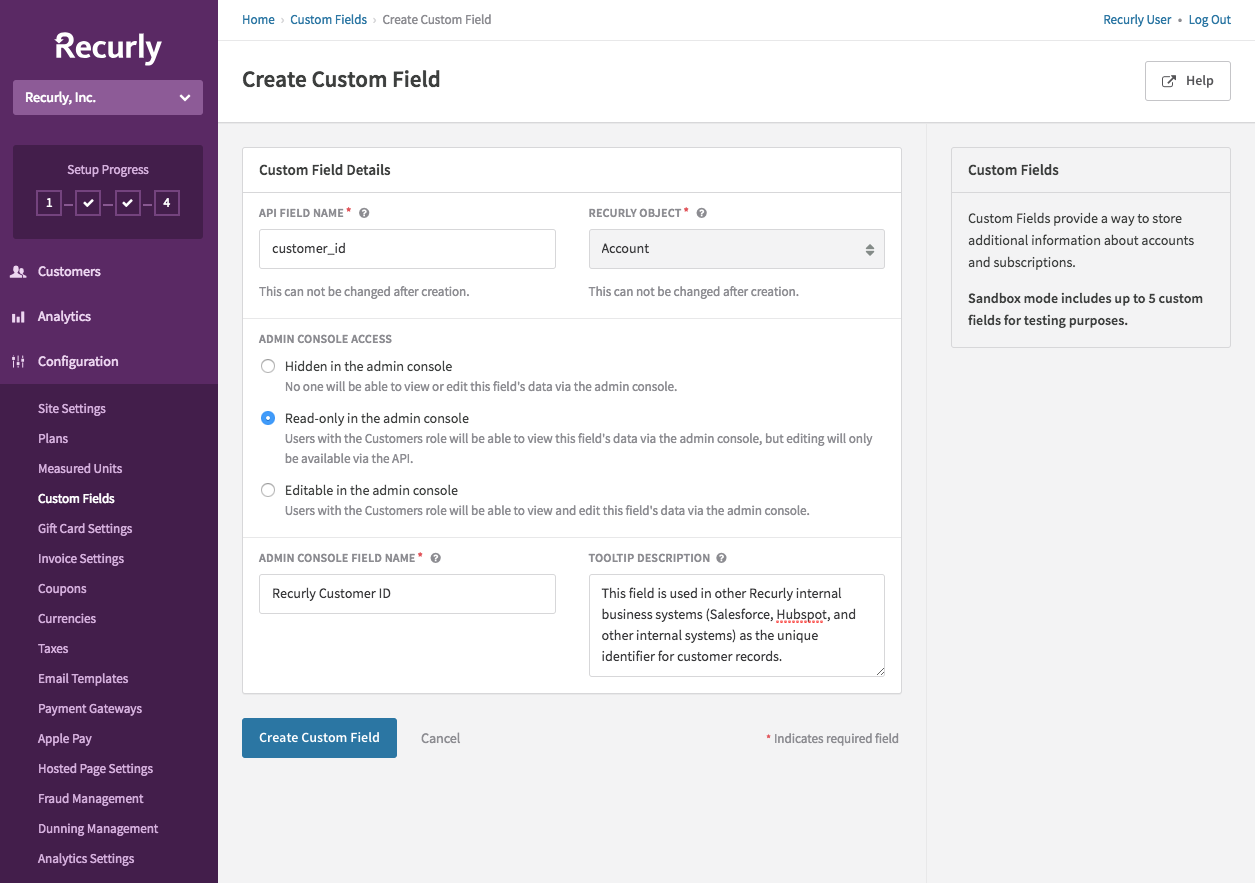
Recurly provides a versatile subscription billing management platform to handle the entire subscriber lifecycle. When integrated with a support system like Zendesk Support, agents will no longer have to switch to separate tabs or systems to view or change customer subscription details.
Plus, Recurly is powerful in its own right, enabling your team to easily manage subscriptions, offer discount codes, set up recurring payments, and more.
Features
- Native integrations
- API
- Self-service portal
- Automation
- Subscription management
- Multiple payment options
Learn more about Recurly for Zendesk.
10. NICE inContact CXone
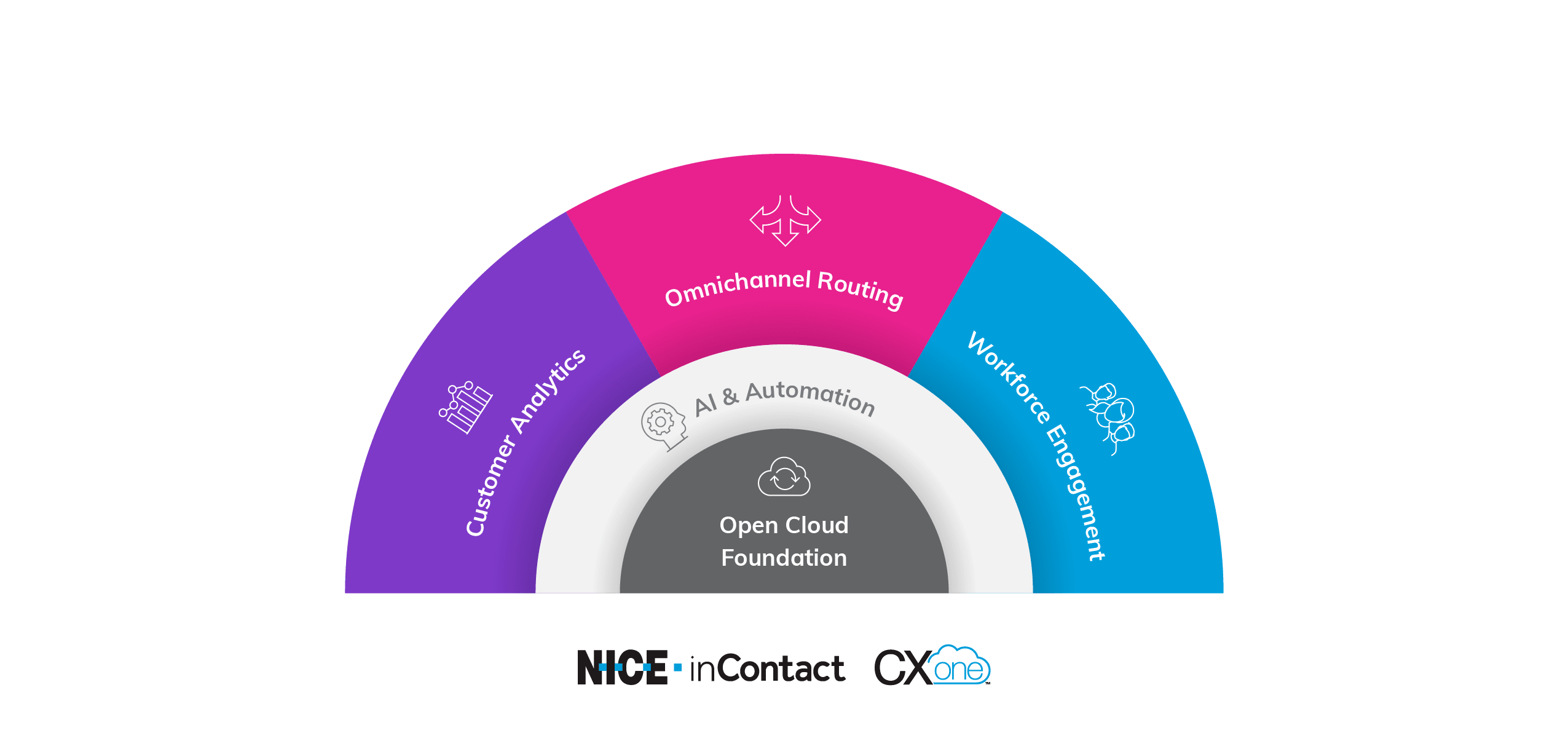
NICE inContact CXone Agent consolidates customer context and contact center controls into a single interface for more efficient agents and better customer experiences. What really sets NICE inContact apart is its breadth of features for more sophisticated, larger service operations.
In addition to voice solutions, ticketing routing, and other standard customer service capabilities, NICE also provides valuable workforce and quality management tools that enable your service managers to continuously improve their team’s performance.
Features
- Ticket routing
- Workforce management
- Customer surveys
- Live chat software
- Native integrations
- Knowledge base
- API
- Tracking and reporting
- Self-service portal
- Automation
Learn more about NICE inContact CXone Agent for Zendesk.
11. EZOfficeInventory
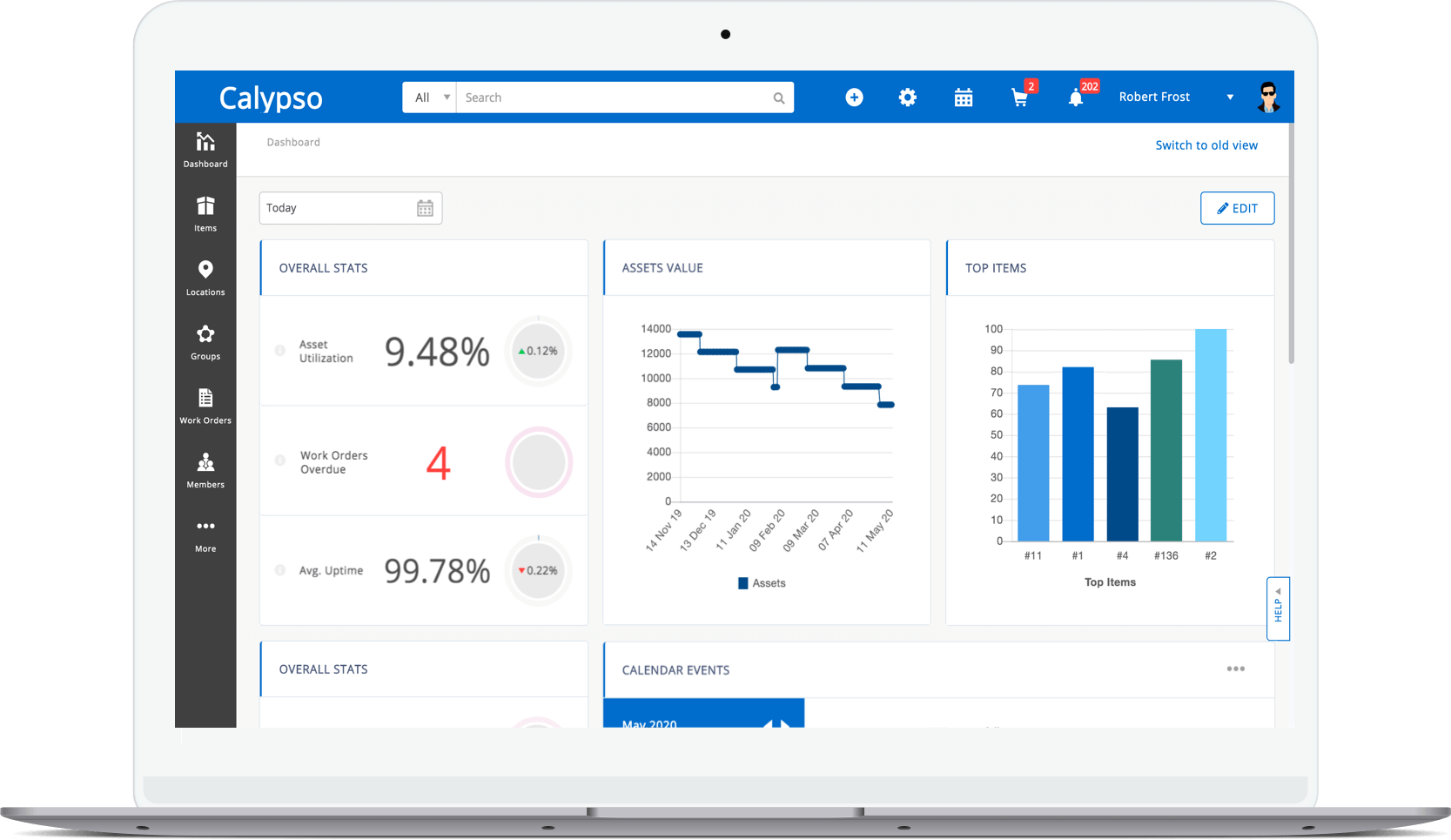
EZOfficeInventory enables organizations across the world to manage tickets and incidents regarding equipment, assets, and inventory.
Typical use cases might include an employee filing a ticket about their broken computer or a person in the field requiring help using a drill machine: EZOfficeInventory manages asset-related details while a support tool like Zendesk manages the ticket workflow.
Features
- Native integrations
- Knowledge base
- Asset tracking
- Barcode scanning
- Maintenance scheduling
- API
- Tracking and reporting
Learn more about the EZOfficeInventory app integration with Zendesk.
12. Boss Solutions Suite

Boss Solutions Suite provides businesses with a fully integrated ITIL-based help desk software and IT asset management solution available on-premise or on the cloud. Their customers include public, education, and healthcare institutions.
In addition to ticket routing, knowledge management, and self-service, Boss Solutions provides asset, incident, and change management capabilities.
Features
- Ticket routing
- Native integrations
- Knowledge base
- API
- Tracking and reporting
- Self-service portal
- Automation
13. Jira Service Desk
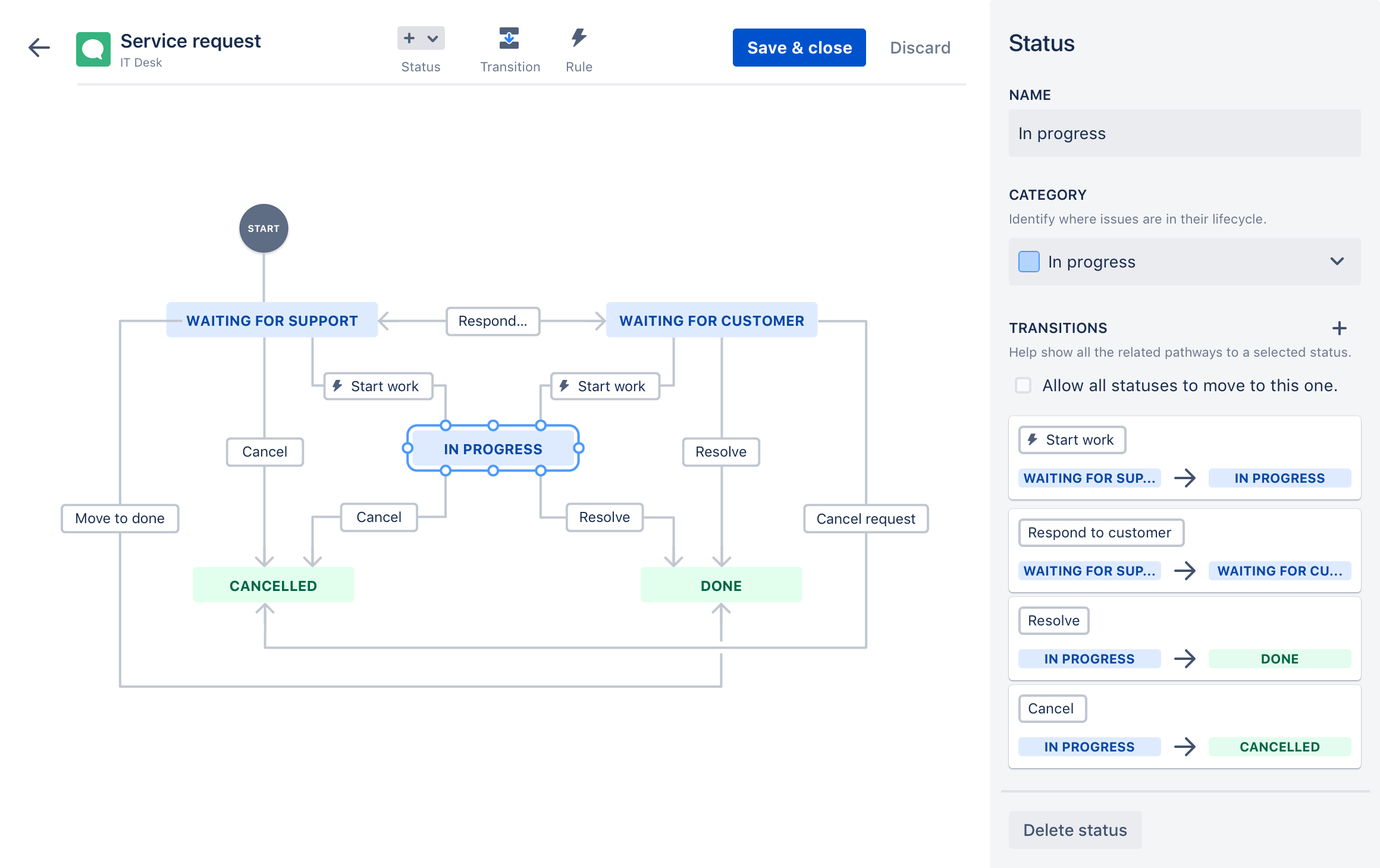
Jira Service Management empowers IT teams with a modern service desk that has everything they need out-of-the-box, including ITIL-certified processes. Jira is developed by Atlassian and it bills itself as the solution to silos between developers, operations, and IT.
All that said, non-IT customer service professionals may find that Jira’s feature set is excessive for their needs. If you’re not sure, go ahead and take JIRA for a spin; they offer 7-day free trials and they have a free plan that can give you a feel for the software.
Features
- Ticket routing
- Live chat software
- Native integrations
- Knowledge base
- API
- Tracking and reporting
- Self-service portal
- Automation
Learn more about Jira for Zendesk.
14. LiveAgent

If your service team spends a lot of time serving customers with live chat, LiveAgent is definitely a tool to consider. LiveAgent improves live chat service delivery with features like real-time typing view, website monitoring for chat engagement, and proactive chat invitations based on the active agent availability.
LiveAgent is an especially solid solution for smaller service teams that use WordPress. And its large library of native integrations allows your team to seamlessly work it into their existing workflows. Plus it has native integrations for many of the most popular apps that support teams use.
Features
- Ticket routing
- Live chat software
- Native integrations
- Knowledge base
- API
- Tracking and reporting
- Self-service portal
- Community forums
- Automation
15. Freshdesk

Freshdesk helps customer service teams streamline collaboration and automation with its intuitive interface and affordable price. In their more expensive plans, Freskdesh offers all the key features you’d expect in customer support management software including team dashboards, social signals, ticket routing, and chatbots.
Another nice perk is that through Freshworks Academy, you can offload some of the burden of training your agents on the system.
Features
- Ticket routing
- Live chat software
- Native integrations
- Knowledge base
- API
- Tracking and reporting
- Self-service portal
- Community forums
- Automation
Comparison chart of top 15 customer service software
Customer Service Software | Conversation Routing | Live Chat Software | Native Integrations | Ticket Routing | API |
|---|---|---|---|---|---|
|
✓
|
✓
|
✓
|
✓
|
✓
|
|
✓
|
X
|
✓
|
X
|
✓
|
|
✓
|
X
|
✓
|
X
|
✓
|
|
X
|
X
|
✓
|
X
|
X
|
|
X
|
✓
|
✓
|
X
|
✓
|
|
X
|
✓
|
✓
|
X
|
✓
|
|
X
|
X
|
✓
|
X
|
✓
|
|
X
|
✓
|
✓
|
X
|
✓
|
|
X
|
X
|
✓
|
X
|
✓
|
|
✓
|
✓
|
✓
|
✓
|
✓
|
|
X
|
X
|
✓
|
✓
|
✓
|
|
✓
|
X
|
X
|
✓
|
✓
|
|
✓
|
X
|
✓
|
✓
|
✓
|
|
✓
|
✓
|
✓
|
✓
|
✓
|
|
✓
|
✓
|
✓
|
✓
|
✓
|
How to choose the best customer service management software for your business
Your customer service software is key to your support team’s day-to-day operations. So finding the right mix of tools is a big deal.
To help you think about what tools might be the best for your team, read through the six questions listed below:
Try Zendesk’s customer service software for free
Seamless communication, personalized to your customers and centralized for your agents, doesn’t have to be a distant dream for you and your team. Zendesk’s customer service system combines it all—integrated customer data, knowledge base management, ticketing, live chat, and much more, to elevate your customer reach and bridge the gaps within your business.
Tap into more knowledge
Keep exploring the world of customer service software and global customer support.
